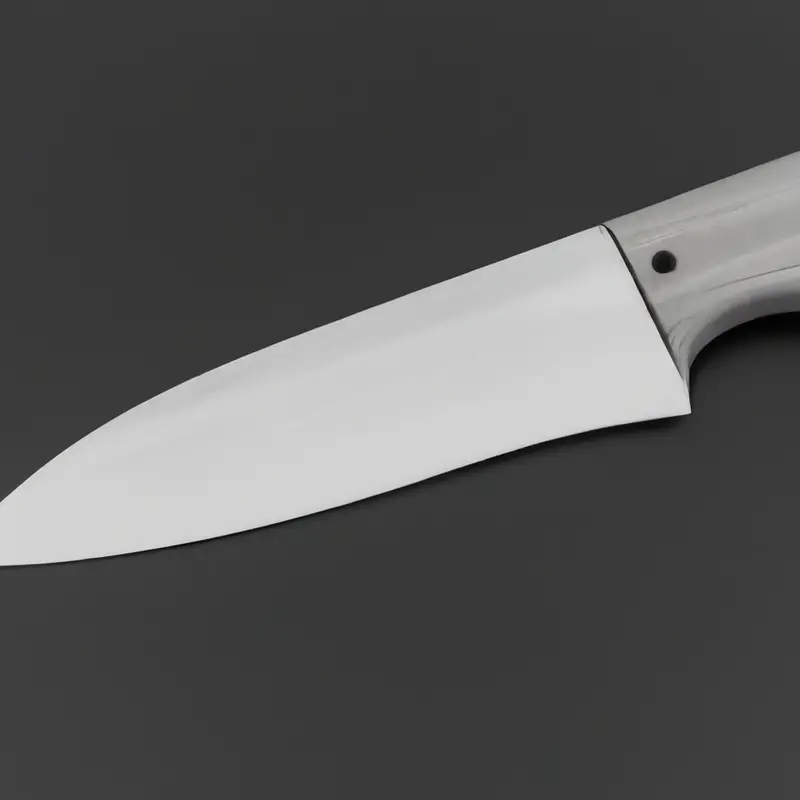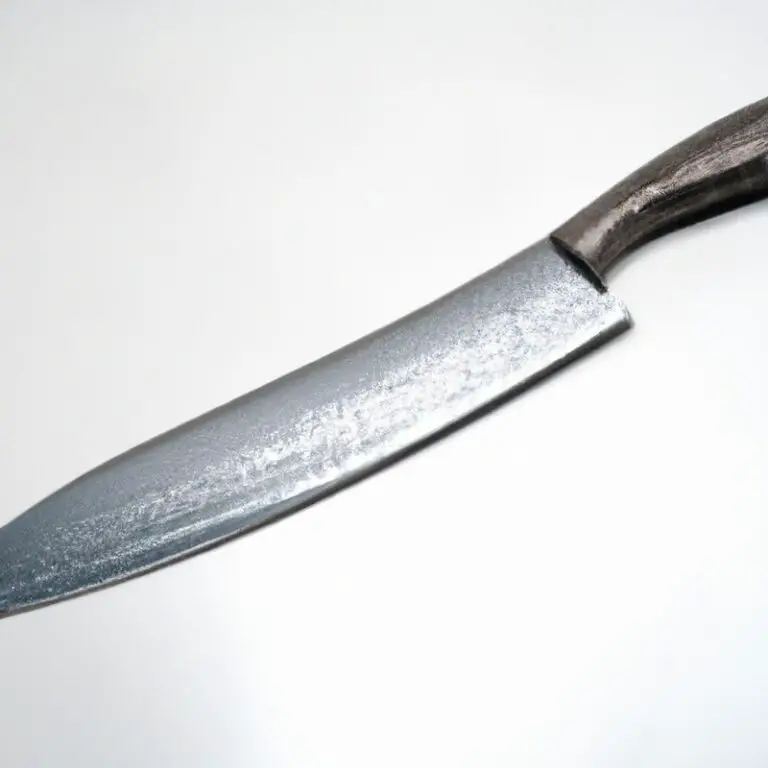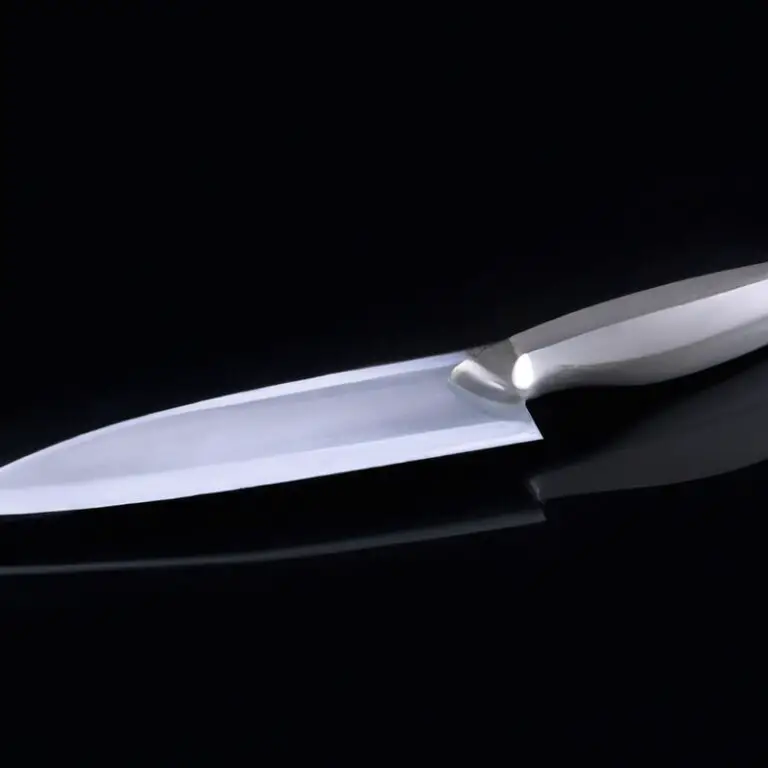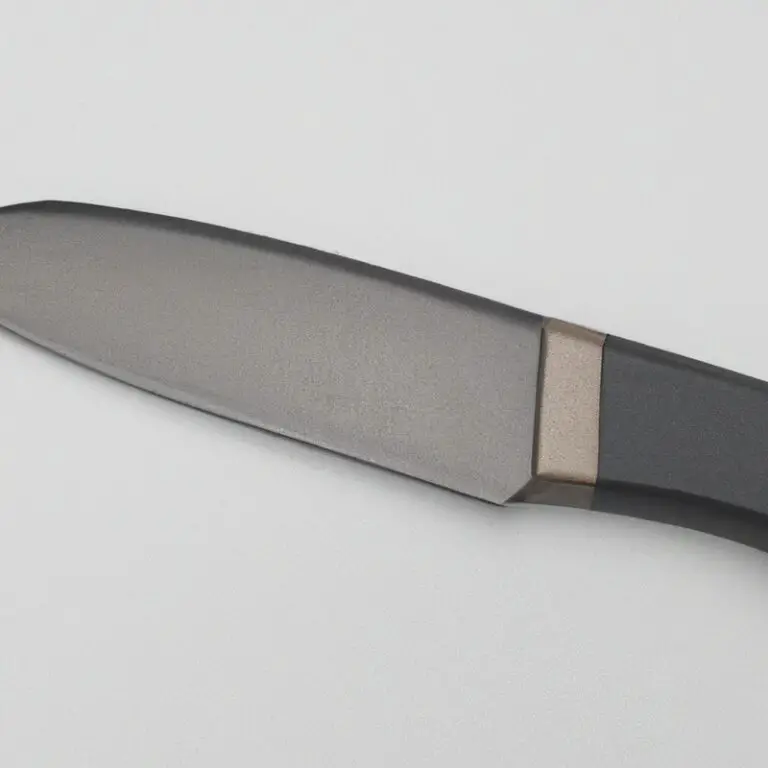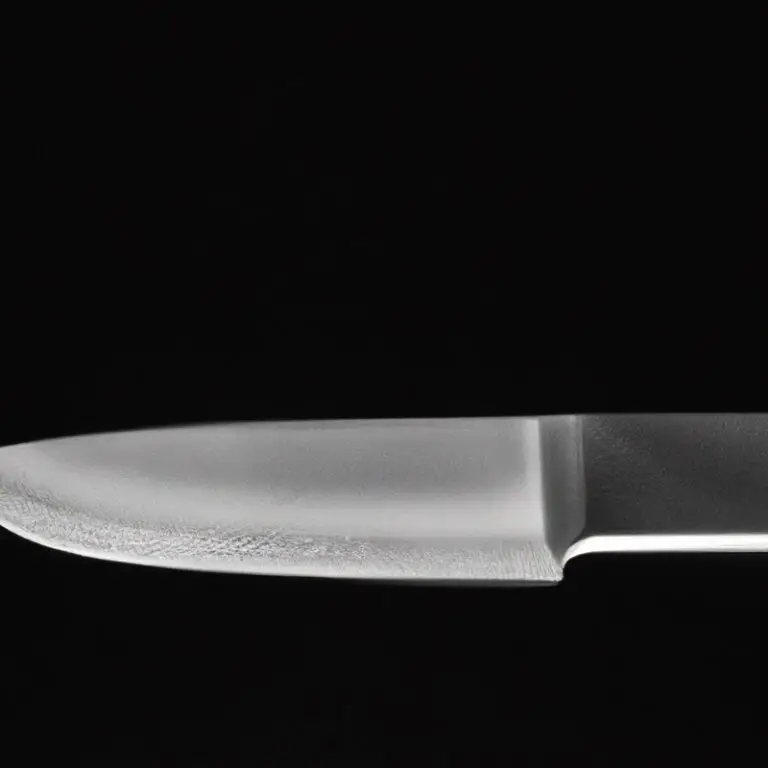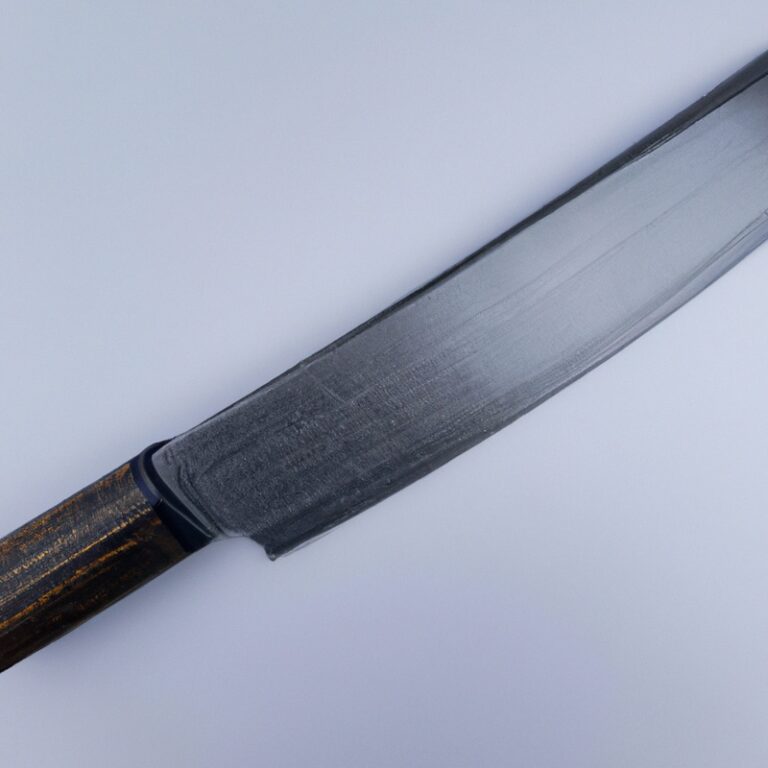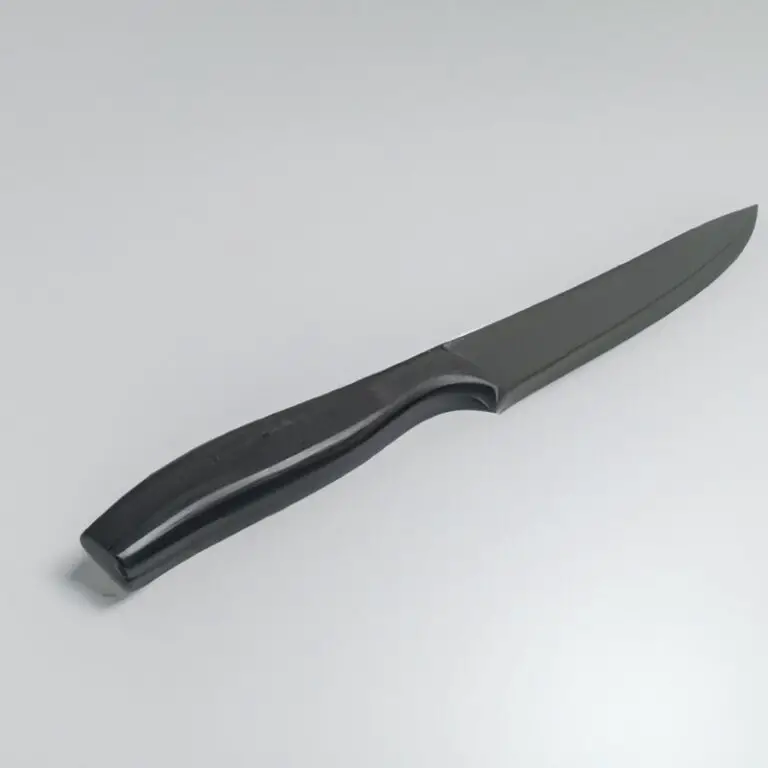What Are The Different Types Of Steel Used In Gyuto Knives? Explained
Key Takeaways:
- The different types of steel used in Gyuto knives include carbon steel and stainless steel.
- Carbon steel provides superior sharpness and edge retention, but requires more maintenance to prevent rust.
- Stainless steel is more resistant to rust and stains but may require more frequent sharpening.
- When purchasing a Gyuto knife, consider the intended use and maintenance preferences to determine the best type of steel for your needs.
Have you ever wondered what types of steel are used in crafting a high-quality Gyuto knife? The steel used in a knife can significantly impact its performance, durability, and sharpness.
As a professional chef, I understand the importance of choosing the right steel to match my cutting needs.
In this blog post, I will explore the different types of steel, including their pros and cons, aesthetic considerations, performance, and durability. By the end of this post, you’ll have a better understanding of what makes each steel unique and be able to choose the right steel for your Gyuto knife.
| Steel Type | Description |
|---|---|
| VG10 | High-quality steel known for its durability, rust-resistance, and ability to hold a sharp edge. It contains 1% carbon, 15% chromium, 1% molybdenum, 0.2% vanadium, and 0.5% cobalt. |
| AUS-10 | A popular steel known for its high-quality and overall value. It contains 1.1% carbon, 14% chromium, 0.3% molybdenum, and 0.2% vanadium, making it durable, rust-resistant, and easy to sharpen. |
| VG-MAX | A premium steel used in high-end Gyuto knives. It contains a high percentage of carbon, chromium, and molybdenum, making it exceptionally durable, rust-resistant, and able to hold a razor-sharp edge. VG-MAX steel is known for its exceptional sharpness and edge retention. |
| Blue Steel #1 | A high carbon steel known for its sharpness and edge retention. It contains 1.3-1.4% carbon, making it harder and more brittle than other types of steel. It requires more maintenance and care, but has a reputation for exceptional sharpness. |
| High-Carbon Stainless Steel | A blend of high-quality carbon steel and stain-resistant stainless steel. It contains around 0.5% carbon and 14% chromium, making it durable, rust-resistant, and easy to sharpen. It is a popular choice for home chefs and professionals alike. |
Understanding the Basics: Types of Steel Used in Gyuto Knives
Gyuto knives are commonly made from different types of steel, each having unique properties that affect a knife’s performance, durability, and maintenance. High carbon steel, Damascus steel, VG-10 steel, AUS 10 steel, SG2 steel, Blue steel #2, White steel #1, and stainless steel are the most common types of steel used in Gyuto knives.
Understanding the differences between these types of steel will help you determine the best steel for your intended use.
High carbon steel is known for its excellent sharpness and edge retention, while Damascus steel has a unique layered pattern and exceptional hardness. VG-10 steel is highly durable and resistant to corrosion, while AUS 10 steel is a popular choice due to its affordability and ease of sharpening.
SG2 steel is prized for its superior strength, hardness, and sharpness, while Blue steel #2 and White steel #1 are known for their extreme sharpness and edge retention.
Finally, stainless steel provides a low-maintenance option for those who prefer stain and corrosion-resistant knives. When choosing a Gyuto knife, it is important to consider the steel type that best suits your needs, preferences, and budget.
High Carbon Steel: Pros and Cons for Gyuto Knives
High carbon steel is one of the most popular types of steel used in Gyuto knives. It contains a higher percentage of carbon compared to other steels, making it harder and more durable.
However, it also has its pros and cons.
Pros:
- High carbon steel produces a sharp edge that makes it ideal for cutting through tough ingredients, such as meat and dense vegetables.
- The material is durable and can withstand heavy use without bending or breaking.
- It is easy to sharpen and holds its edge for a long time.
Cons:
- High carbon steel is more prone to rust and corrosion compared to other steels. It requires diligent maintenance, such as drying and oiling after use, to prevent rust build-up.
- The high carbon content makes the steel more brittle and prone to chipping if it encounters hard materials, such as bones or frozen food.
- It is more expensive than other types of steel used in Gyuto knives.
Overall, high carbon steel is an excellent choice for Gyuto knives if you’re willing to put in the effort to maintain it properly. It provides superior sharpness and durability that are essential for a variety of cutting tasks.
Damascus Steel: Aesthetic and Functional Considerations for Gyuto Knives
Damascus steel is a popular choice for gyuto knives due to its unique aesthetic qualities and functional benefits. This type of steel is made by layering different types of metals together and using heat to fuse them.
The layers create a distinctive pattern on the blade that is highly sought after by collectors and chefs alike.
In addition to its attractive appearance, Damascus steel is also known for its durability and sharpness. The layering process helps to create a strong, resilient blade that can withstand heavy use.
It also allows for a very thin edge, which is ideal for precision cutting.
However, it is important to note that not all Damascus steel is created equal. Some manufacturers may use inferior materials or techniques, resulting in a lower quality blade.
When considering a Damascus steel gyuto knife, it is important to look for a reputable manufacturer and to research the specific materials and process used in its creation.
This will ensure that you are getting a high-quality blade that is both visually stunning and functional for your kitchen needs.
VG-10 Steel: Advantages and Disadvantages for Gyuto Knives
VG-10 steel is a high-quality steel often used in Gyuto knives due to its excellent balance of strength, durability, and corrosion resistance. It is a popular choice among knife makers because of its high level of hardness, which enables it to hold a sharp edge well.
Advantages:
- Resistant to rust and corrosion
- Excellent sharpness retention
- Ability to retain sharpness through sustained use
- Possesses a fine grain structure which lends to its strength and durability
Disadvantages:
- Can be difficult to sharpen for beginners
- More expensive than other types of steel
- Not as hard as other premium steels
Overall, VG-10 steel is an excellent choice for those who need a high-quality and durable blade that can take some abuse while still maintaining a razor-sharp edge. The disadvantages are outweighed by the advantages, making it a popular choice among chefs and home cooks alike.
AUS 10 Steel: Is It a Good Choice for Gyuto Knives?
AUS 10 is a high-quality Japanese steel that is often used in the manufacturing of Gyuto knives. It is a well-balanced steel that offers excellent corrosion resistance, toughness, and edge retention.
Furthermore, it is easy to sharpen, making it an ideal steel for home cooks and professional chefs who demand precision and efficiency in their cutting tasks.
The main advantage of AUS 10 steel is its ability to maintain a sharp edge for an extended period, making it an excellent choice for Gyuto knives. It also possesses good flexibility, allowing it to bend without breaking or chipping, making it a perfect option for cutting tough meats and bones.
However, AUS 10 steel’s minor drawback is its lower hardness compared to other premium steels.
Nevertheless, it can still hold an incredibly sharp edge and provide power that outperforms other comparable steels in its price range. All in all, AUS 10 steel is an excellent choice for those who want a high-quality Gyuto knife without breaking the bank.
It is a versatile and reliable steel that is perfect for a variety of cutting tasks and will undoubtedly provide a seamless cooking experience.
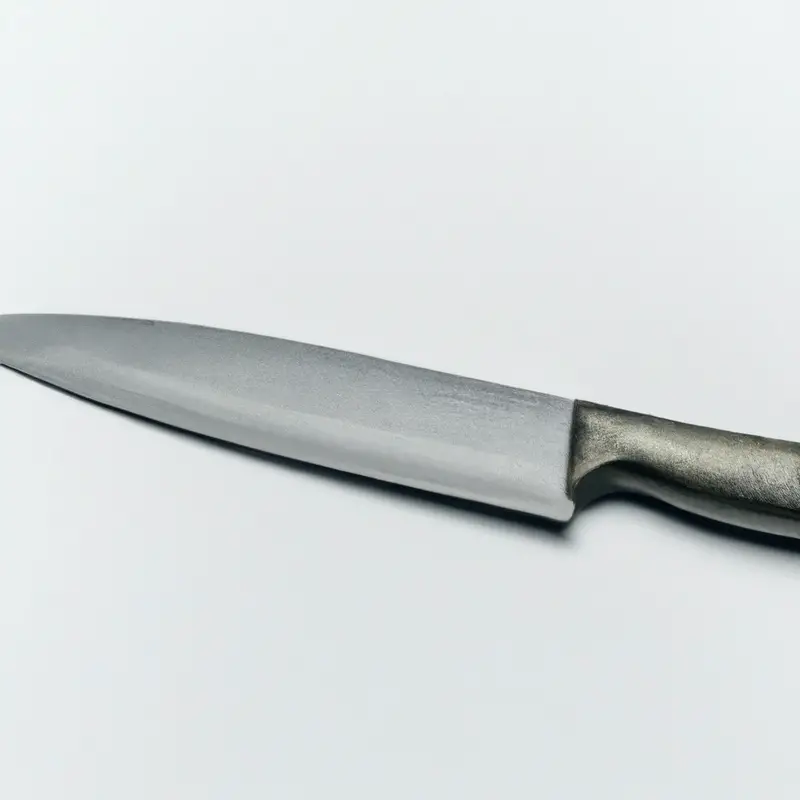
SG2 Steel: Superior Resistance and Durability for Gyuto Knives
SG2 steel is a high-quality steel alloy that is used in gyuto knives for its superior resistance and durability. This steel is known for its high hardness, allowing it to hold an incredibly sharp edge and resist wear and tear.
It also has excellent rust and corrosion resistance, making it perfect for use in kitchen knives, where moisture is an ever-present threat.
SG2 is a complex steel blend, made up of several elements, including carbon, chromium, molybdenum, and vanadium. These elements contribute to its impressive performance and longevity, making it a top choice for professional chefs and home cooks alike.
While SG2 steel can be more expensive than other types of steel, its durability and resistance to wear means that it will last longer and require less maintenance over time, making it a wise investment for those who value quality and performance in their knives.
Blue Steel #2: How It Performs in Gyuto Knives
Blue Steel #2 is a high-quality, Japanese steel commonly used in Gyuto knives. It is a type of carbon steel, known for its excellent edge retention and durability.
Compared to other types of steel, Blue Steel #2 has a higher carbon content, which makes it harder and more resistant to wear and tear.
This makes it an ideal choice for Gyuto knives, which are designed for precision cutting and chopping. The steel’s composition also gives it incredible sharpness that can last for a longer time.
However, the high carbon content also makes Blue Steel #2 more difficult to sharpen.
It requires an experienced knife sharpener or a user with experience to maintain the knife’s edge without damaging it. Additionally, the steel is prone to rust and corrosion, which means that proper care is crucial to avoid damage to the blade.
Overall, if you are looking for a high-quality steel with excellent edge retention and durability for your Gyuto knife, Blue Steel #2 is a great choice.
However, keep in mind that you will need to maintain and care for the knife properly to ensure it lasts for a long time.
White Steel #1: What It Brings to Gyuto Knives
White Steel #1, also known as Shirogami #1, is a high carbon steel that is widely used in crafting Gyuto knives. This steel is a top choice for knife makers due to its exceptional sharpness, durability, and edge retention.
White Steel #1 has a carbon content of around 1%, which makes it harder than most other premium steel types used in kitchen knives.
White Steel #1 is renowned for its ability to hold sharp edges for an extended period, making it perfect for tasks that require precise cuts. While the steel is hard, it is also relatively easy to re-sharpen, especially by experienced knife sharpeners.
Another advantage of White Steel #1 is its ability to develop a natural patina over time.
This natural patina helps to protect the blade from rust and corrosion, giving it an appealing and unique appearance. However, White Steel #1 is not without its drawbacks.
It is prone to rust and corrosion and requires proper care to maintain its appearance and performance.
Moreover, White Steel #1 is relatively brittle, and care must be taken when handling the knife to avoid accidental breakage. In summary, White Steel #1 is an excellent choice for Gyuto knives due to its exceptional sharpness, edge retention, and durability.
While it requires careful maintenance to avoid rust and corrosion, it is a worthwhile investment for anyone looking for a high-quality kitchen knife.
Stainless Steel: The Benefits and Drawbacks for Gyuto Knives
Stainless steel has long been a popular choice for kitchen knives, including the gyuto knife. One of the main benefits of stainless steel is its resistance to corrosion and rust, making it a low-maintenance option for busy kitchens.
It also tends to be more affordable than high-end carbon steels, making it widely accessible.
However, there are some drawbacks to stainless steel for gyuto knives. One is that it tends to be less sharp than other types of steel, which can be frustrating for chefs who prioritize sharpness.
It also tends to be softer than high-carbon steel, which means it may not hold an edge as well over time.
Overall, stainless steel is a solid choice for a gyuto knife if you’re looking for a durable and low-maintenance option. However, if sharpness and edge retention are a top priority, you may want to consider other types of steel.
Choosing the Right Steel for Your Gyuto Knife: What to Consider
When choosing the right steel for your Gyuto knife, there are a few factors to consider. First, consider your budget as different steels will have varying price points.
Also, think about the intended use of your knife.
Will it be used for daily cooking or heavy-duty tasks? Finally, consider the level of maintenance required.
Some steels may require frequent sharpening or oiling to maintain their quality.
By taking these factors into account, you can choose the steel that best fits your needs and preferences.
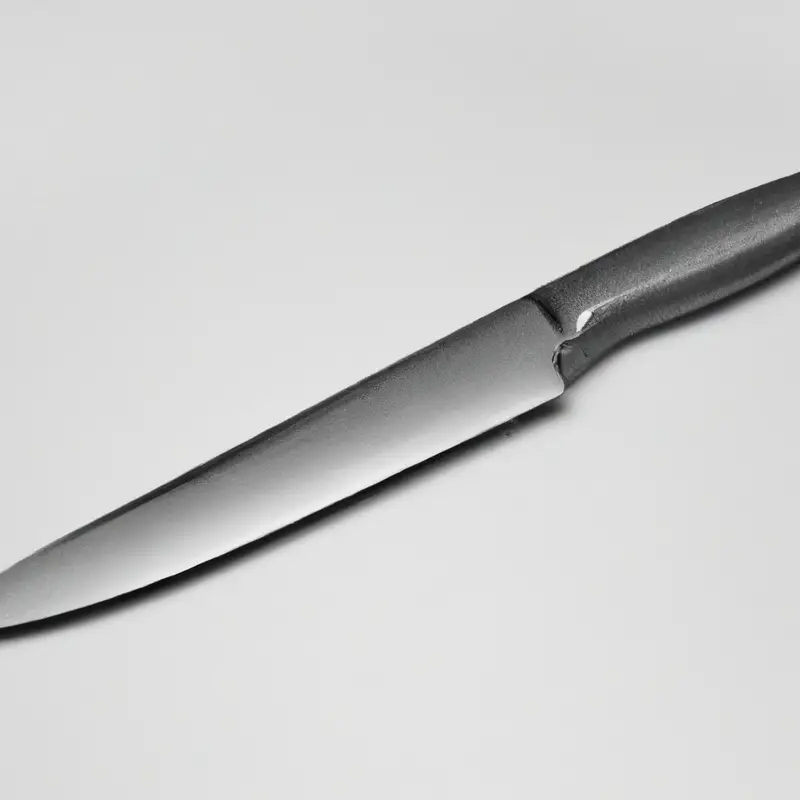
Final Verdict
Choosing the right steel for your Gyuto knife is not only a matter of personal preference but also an essential factor in determining its performance and durability. By understanding the various types of steel used in Gyuto knives, you can make an informed decision and select the one that best suits your needs and budget.
Whether you prioritize sharpness, edge retention, or ease of maintenance, there’s a steel that can deliver the results you desire.
At the end of the day, investing in a high-quality Gyuto knife made with reliable and trustworthy steel is a wise choice that will serve you well for years to come. So when you look for the perfect Gyuto knife, keep these considerations in mind and be confident in your decision, knowing that you have made a smart and informed choice.

